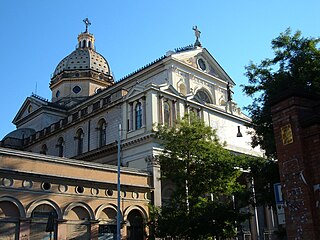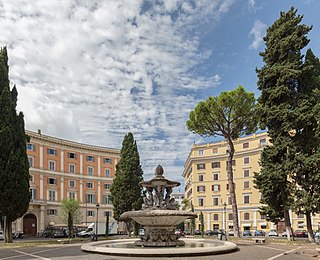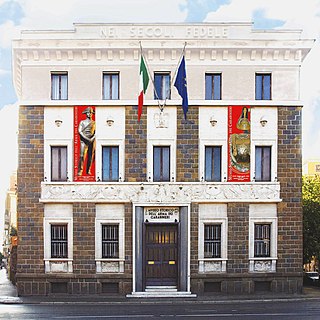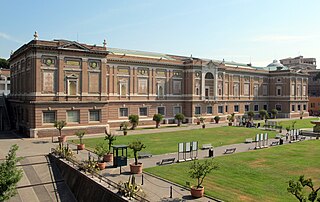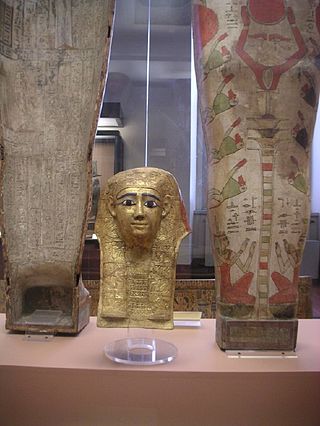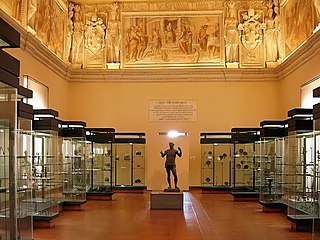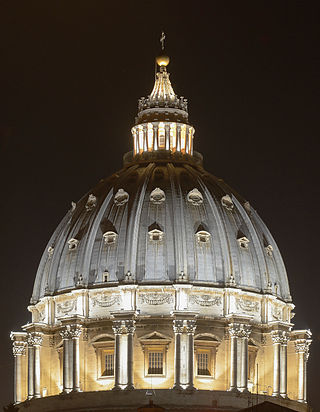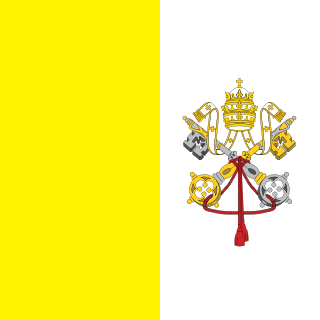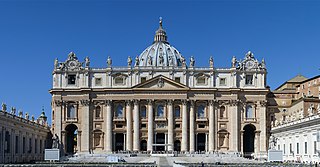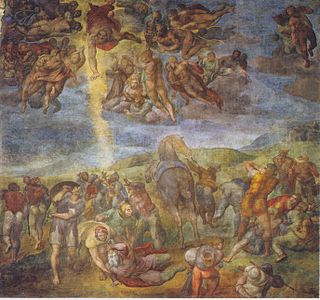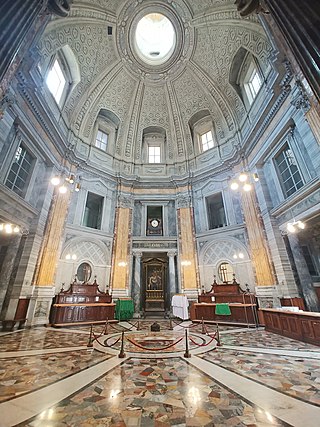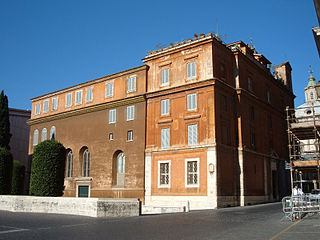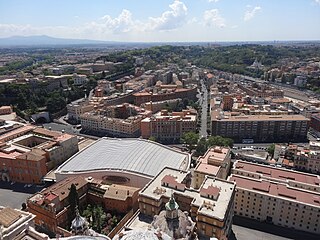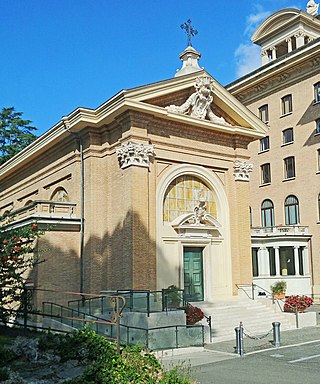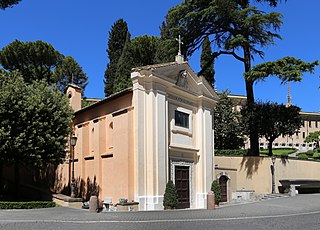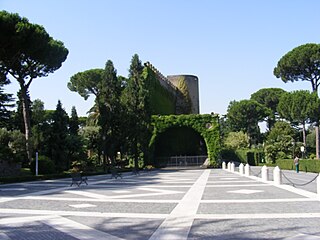Self-guided Sightseeing Tour #6 in Rome, Italy
Legend
Guided Free Walking Tours
Book free guided walking tours in Rome.
Guided Sightseeing Tours
Book guided sightseeing tours and activities in Rome.
Tour Facts
5.8 km
152 m
Experience Rome in Italy in a whole new way with our free self-guided sightseeing tour. This site not only offers you practical information and insider tips, but also a rich variety of activities and sights you shouldn't miss. Whether you love art and culture, want to explore historical sites or simply want to experience the vibrant atmosphere of a lively city - you'll find everything you need for your personal adventure here.
Activities in RomeIndividual Sights in RomeSight 1: Chiesa di San Gioacchino in Prati
San Gioacchino ai Prati di Castello is a church in Rome dedicated to Saint Joachim, the father of Mary, mother of Jesus. Construction began in 1891 and the building was opened to the public in 1898. It was consecrated on 6 June 1911 by Cardinal Pietro Respighi. Pope John XXIII made it a cardinal's titular church in 1960.
Sight 2: Fountain of Piazza dei Quiriti
The Fontana della Piazza dei Quiriti is a fountain in the Piazza dei Quiriti in Rome, in the middle of the Prati rione. The plaza is named after the inhabitants of the city of Cures, the Curites or later Quirites, namely the Sabines, who became inhabitants and co-founders of Rome. Another theory derives the name from the god Quirinus, a Roman deity.
Sight 3: Museo Storico dell'Arma dei Carabinieri
The Historical Museum of the Carabinieri is located in Piazza del Risorgimento 46 in Rome, in the Prati district, a few steps from the Vatican.
Sight 4: Necropoli della Via Triumphalis
The necropolis of Santa Rosa, which is part of the Roman necropolis of the Via Triumphalis, is a Roman necropolis discovered in 2003 in Vatican City during the construction of the Santa Rosa car park.
Sight 5: Santa Maria delle Grazie al Trionfale
The church of Santa Maria delle Grazie al Trionfale is a church in Rome, in the Trionfale district, in Piazza Santa Maria delle Grazie.
Wikipedia: Santa Maria delle Grazie a Via Trionfale (EN), Website
Sight 6: Pinecone
Sight 7: Vatican Museums
Get Ticket*The Vatican Museums are the public museums of Vatican City, enclave of Rome. They display works from the immense collection amassed by the Catholic Church and the papacy throughout the centuries, including several of the most well-known Roman sculptures and most important masterpieces of Renaissance art in the world. The museums contain roughly 70,000 works, of which 20,000 are on display, and currently employs 640 people who work in 40 different administrative, scholarly, and restoration departments.
Sight 8: Vatican Art Gallery
The new Vatican Pinacoteca is an art gallery that is part of the Vatican Museums. It was inaugurated on October 27, 1932 in the building built by the architect Luca Beltrami, specifically to house the art gallery, at the behest of Pope Pius XI.
Sight 9: Museo Gregoriano Egizio
The Gregorian Egyptian Museum is one of the Vatican Museums.
Sight 10: Museo Gregoriano Etrusco
The Gregorian Etruscan Museum is one of the Gregorian museums of the Vatican, located in the palace of Innocent VIII and a building from the time of Pope Pius IV.
Sight 11: Fountain of the Galley
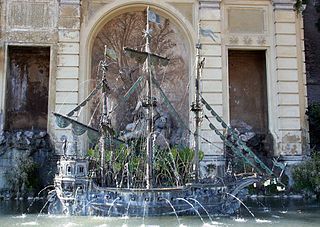
The Galley Fountain is located in Piazzale della Galera in Vatican City, outside the Vatican Gardens.
Sight 12: Emperor Constantine the Great
The Vision of Constantine is an equestrian sculpture by the Italian artist Gian Lorenzo Bernini, located in the Scala Regia by St. Peter's Basilica in Vatican City. Originally commissioned as a free standing work of art within St. Peter's itself, the sculpture was finally unveiled in 1670 as an integral part of the Scala Regia - Bernini's redesigned stairway between St. Peter's Basilica and the Vatican Palace. Unlike other large works by Bernini, art historians have suggested that this work was almost entirely undertaken by him - no other sculptors have been recorded as receiving payment. Bernini's overall fee was 7,000 Roman scudi.
Sight 13: Cupola di San Pietro
The dome of St. Peter's forms the cover of the cross of St. Peter's Basilica in the Vatican.
Sight 14: Vatican City
Get Ticket*Vatican City, officially the Vatican City State, is a sovereign country, city-state, microstate, and enclave surrounded by, and historically a part of, Rome, Italy. It became independent from Italy in 1929 with the Lateran Treaty, and is a distinct territory under "full ownership, exclusive dominion, and sovereign authority and jurisdiction" of the Holy See, which is itself a sovereign entity under international law, maintaining the city-state's temporal power, governance, diplomatic, and spiritual independence. The Vatican is also a metonym for the pope, the Holy See, and the Roman Curia. The country has the world's smallest land area and the smallest population, with 764 citizens as of 2023.
Sight 15: Saint Peter's Basilica
Get Ticket*The Papal Basilica of Saint Peter in the Vatican, or simply Saint Peter's Basilica, is a church of the Italian High Renaissance located in Vatican City, an independent microstate enclaved within the city of Rome, Italy. It was initially planned in the 15th century by Pope Nicholas V and then Pope Julius II to replace the ageing Old St. Peter's Basilica, which was built in the fourth century by Roman emperor Constantine the Great. Construction of the present basilica began on 18 April 1506 and was completed on 18 November 1626.
Sight 16: Sistine Chapel
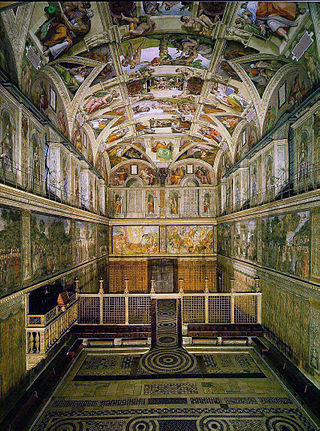
The Sistine Chapel is a chapel in the Apostolic Palace, the pope's official residence in Vatican City. Originally known as the Cappella Magna, it takes its name from Pope Sixtus IV, who had it built between 1473 and 1481. Since that time, it has served as a place of both religious and functionary papal activity. Today, it is the site of the papal conclave, the process by which a new pope is selected. The chapel's fame lies mainly in the frescoes that decorate its interior, most particularly the Sistine Chapel ceiling and The Last Judgment, both by Michelangelo.
Sight 17: Stanze di Raffaello
The four Raphael Rooms form a suite of reception rooms in the Apostolic Palace, now part of the Vatican Museums, in Vatican City. They are famous for their frescoes, painted by Raphael and his workshop. Together with Michelangelo's Sistine Chapel ceiling frescoes, they are the grand fresco sequences that mark the High Renaissance in Rome.
Sight 18: Pauline Chapel
The Cappella Paolina is a chapel in the Apostolic Palace, Vatican City. It is separated from the Sistine Chapel by the Sala Regia. It is not on any of the regular tourist itineraries.
Sight 19: Pietà
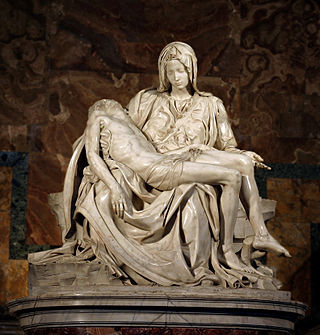
The Pietà is a Carrara marble sculpture of Jesus and Mary at Mount Golgotha representing the "Sixth Sorrow" of the Virgin Mary by Michelangelo Buonarroti, in Saint Peter's Basilica, Vatican City, for which it was made. It is a key work of Italian Renaissance sculpture and often taken as the start of the High Renaissance.
Sight 20: Sacristy
The sacristy of St. Peter's stands on the southern side of the basilica of the same name, inside Vatican City.
Sight 21: Chiesa di Santa Maria della Pietà
The Church of Our Lady of Mercy in the Teutonic Cemetery is a Roman Catholic church in the rione Borgo of Rome, Italy. It is located on the Via della Sagrestia.
Wikipedia: Santa Maria della Pietà in Camposanto dei Teutonici (EN)
Sight 22: Paul VI Audience Hall
The Paul VI Audience Hall, also known as the Hall of the Pontifical Audiences, is an audience hall in which the Pope has held various audiences and conferences.
Sight 23: St Mary's Church
The Church of Mary, Mother of the Family is a Catholic place of worship located within the Vatican City, in Largo San Matteo, in the Vatican Gardens, adjacent to the Palace of the Governorate. Note that the exact name of the Church is "Mary, Mother of the Family". The wording "Santa Maria Regina della Famiglia" is not really correct.
Sight 24: Saint Stephen of the Ethiopians
Saint Stephen of the Abyssinians is an Ethiopian Catholic church located in the Vatican City. The church dedicated to Stephen the Protomartyr is the national church of Ethiopia. The liturgy is celebrated according to the Alexandrian rite of the Ethiopian Catholic Church. It is one of the only standing structures in the Vatican to survive the destruction of Old St. Peter's Basilica (c. 1505), and thus it is the oldest surviving church in Vatican City.
Sight 25: Lourdes Grotto
Grotta di Lourdes is an artificial cave in the Vatican gardens. It was built in 1902–1905 and is a replica of the Lourdes Grotto in France. The context of building this grotto is the vision of the Madonna that a young girl, Bernadette Soubirous, experienced 18 times. Prior to that the Pope had promulgated the dogma of the Immaculate Conception in 1854.
Sight 26: Vatican Hill
Vatican Hill is a hill in Rome, located on the right bank of Tiber river, opposite to the traditional seven hills of Rome. The hill also gave the name to Vatican City. It is the location of St. Peter's Basilica.
Share
How likely are you to recommend us?
Disclaimer Please be aware of your surroundings and do not enter private property. We are not liable for any damages that occur during the tours.
GPX-Download For navigation apps and GPS devices you can download the tour as a GPX file.
